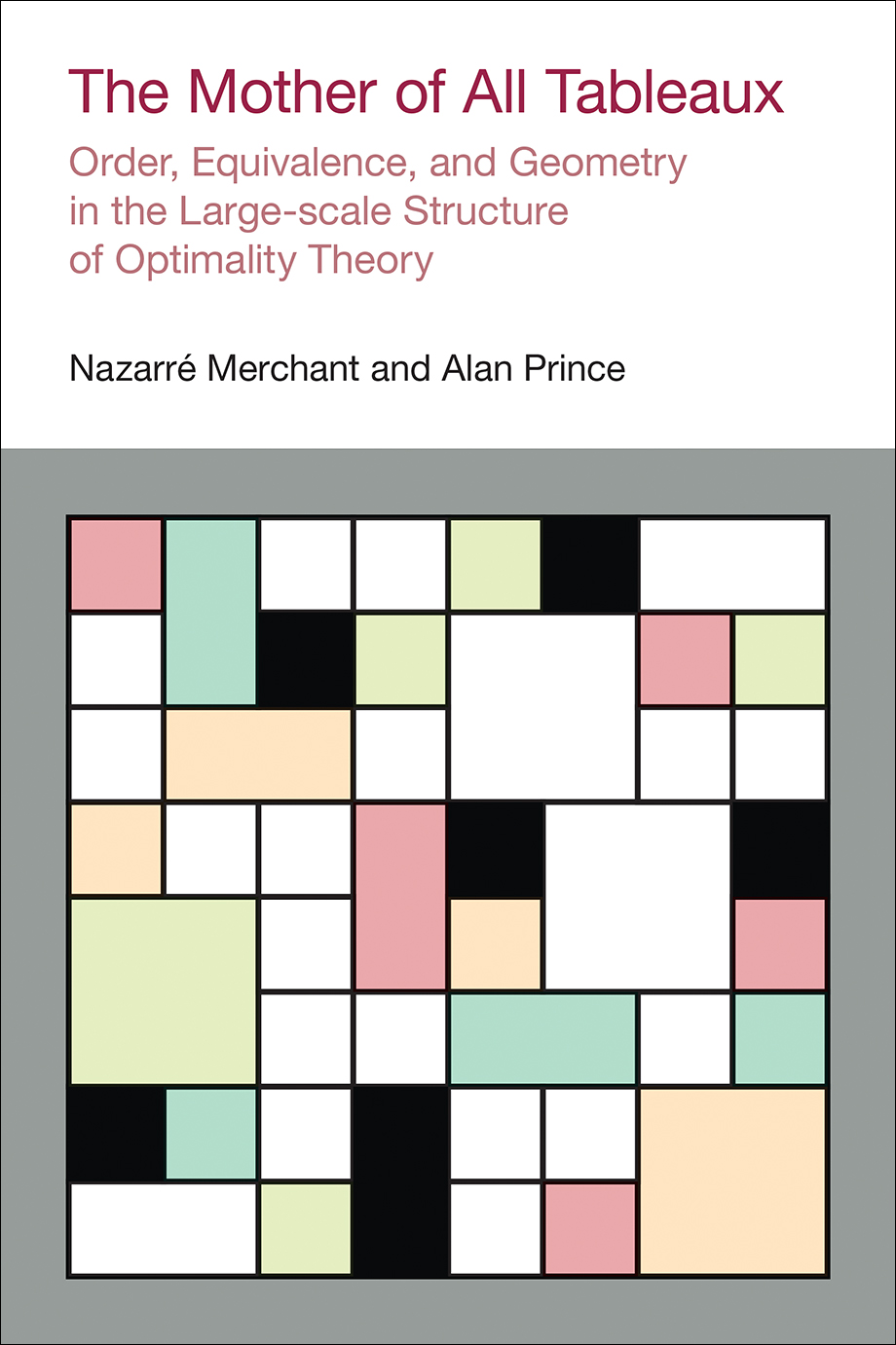
The Mother of All Tableaux - Order, Equivalence, and Geometry in the Large-scale Structure of Optimality Theory - Nazarré Merchant
Appendix IV: Notation
The Mother of All Tableaux - Order, Equivalence, and Geometry in the Large-scale Structure of Optimality Theory - Nazarré Merchant
Nazarré Merchant [+]
Eckerd College, St Petersburg, Florida
Alan Prince [+]
Independent Scholar
Description
What is the large-scale structure relating grammars that emerges from the low-level interactions inside them? This volume resolves certain fundamental aspects of this question for OT, preparing the way for a yet deeper understanding of the theory. Any OT system specifies the candidates, candidate sets, and constraints at play, and from these a typology of the system follows: the set of its admitted grammars. An OT grammar arises from the comparison of candidates over a set of constraints. An OT typology, as an unexpected consequence, compares entire grammars over the same set of constraints. At this level, a constraint is revealed as an abstract order and equivalence structure relating grammars rather than linguistic forms, which we call an EPO, an 'Equivalence-augmented Privileged Order'. The EPO has a simple graphical representation, generalizing the Hasse diagram. The collection of the EPOs, each one representing a single constraint, forms the MOAT, the 'Mother of All Tableaux'. The unique MOAT of a typology is instantiated in every violation tableau that gives rise to it. With this new characterization of 'typology' in hand, we can pose and answer fundamental questions about the structure imposed by OT on its grammars. (1) Typological Status. When does a family of grammars constitute an OT typology? Since a typology must have a well-formed MOAT, we can assess whether a given partition of the set of all rankings constitutes an OT typology. Surprisingly, dividing this set into individually well-formed grammars is not guaranteed to produce a legitimate typology. Failures are detected by the appearance of cycles in the EPO graphs of the MOAT. Concomitantly, we can determine which VT representations are equivalent in the sense that they yield the same typology. (2) Classification. How are the grammars of a typology similar and how are they different? Within a typology, MOAT structure determines whether a collection of grammars can be classified together as a kind of super-grammar, one that retains their shared linguistic patterns while abstracting away from their differences. This contributes to the foundations of the Classification Program of Alber & Prince (2015, 2017). (3) Representation. What formal structures provide analytically useful information about the organization of typologies? The MOAT arises from a notion of adjacency between rankings, which correlates with the way that rankings filter candidate sets. Adjacency leads to a natural graphical interpretation. Each typology is associated with a geometric figure that represents the relations between its grammars: its typohedron. Super-grammars appear as connected regions on the typohedron. The MOAT brings out symmetries between constraints, and these appear on the typohedron as symmetries between super-grammar regions. Such patterns transparently reveal global aspects of typological form which may be obscure or even invisible in the microstructure of constraints and candidates where the project of analysis begins.





